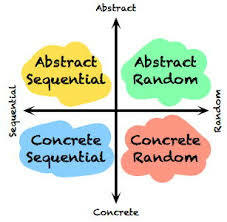e-Learning Ecologies MOOC’s Updates
Update #7 - Learner Diversity: Learner profiles
We know that every person is unique. It's something we accept without prompting, however in traditional learning we have a tendency to treat students as if every one of them will learn the material being put to them in exactly the same manner.
The truth is that in the same way that every person is unique in terms of physical looks, we all think and learn in a way that is unique as well. Learner profiles are a way of trying to break down some of the different ways individual students learn, so as to help us as trainers or educators make better decisions as to how to teach.
There are a great number of different styles that have been prescribed to help teach such an individualized audience. Learning style categorization such as auditory learners, or visual learners that differentitate the different kinds of sensory input a specific student prefers for learning or retaining information.
Also preferences when it comes to how certain people think. Do they prefer more of a freeform conversation with random facts and creative metaphors, or do they have a more sequential pattern of thinking and prefer more of a step-by-step sequential approach with one lesson leading logically to the next?
When profiling students to make for a better learning environment it's important to remember that we are not attempting to categorize students into specific buckets, but that all students will be on a spectrum of learning styles and these specific categories are there to help us understand their leanings rather create an absolute for them, which would be recreating the exact issue profiles are trying to help us escape.
Since learner profiles require assessment of each individual student to understand their particular learning style, it can be a huge challenge for a larger teacher/student ratio and really requires a small group size to be effective. It's a concept that can also have extra challenges in an online environment, especially in a self-paced learning environment.
This perhaps would end up being a great case for an adaptive learning program, which, if properly built, could adapt a self-paced learning process to the specific style of a student on the fly. As adaptive learning algorithms become more effective, perhaps it will lead to a future pedagogy in which the style of learning for a student is as important a factor as an all encompassing exam is today.
Sources:
https://differentiatedinstruction.ca/resources/6_ch3%20learner.pdf
https://turningpointcentre.com/identifying-your-learning-style.html
https://sites.google.com/a/learnnorthcoast.com/learning-library-for-teachers/learning-styles
https://www.smartsparrow.com/what-is-adaptive-learning/
https://er.educause.edu/articles/2016/10/adaptive-learning-systems-surviving-the-storm




From my experience with students, it is best to apply the three models: auditory, visual, and kinesthetic in the basic stage, because they need to build students’ skills. I believe that curricula all over the world are based on this context, but in the intermediate stage it is sufficient to link the auditory and visual method because the student has become more mature and aware.